fear
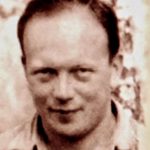 Heroes come in many forms, but few could be said to have been as sneaky as Eugene Lazowski, who was born Eugeniusz Slawomir Lazowski, in 1913 in Poland. His bravery was combined with genius, and in the end, he saved 8,000 Polish Jews at the height of the Holocaust. Lazowski saw the horrible way the Jews were treated, and he saw a way to help. Eugene Lazowski had just finished medical school when the Nazis invaded Poland in 1939. Typhus was spreading across the country. The disease was killing an average of 750 people a day. In an attempt to contain the disease, the Nazis increased their isolation and execution of Jews. Eugene joined the Polish Red Cross, but he was forbidden by the Nazis from treating Jewish patients. Nevertheless, under the cover of darkness, he sneaked into the Jewish ghetto and took care of the people there. Lazowski’s plan took an incredible amount of intellect, not to mention bravery. His life was on the line too. Lazowski created the illusion of an epidemic of a deadly disease, playing on the deep fears of the Nazis.
Heroes come in many forms, but few could be said to have been as sneaky as Eugene Lazowski, who was born Eugeniusz Slawomir Lazowski, in 1913 in Poland. His bravery was combined with genius, and in the end, he saved 8,000 Polish Jews at the height of the Holocaust. Lazowski saw the horrible way the Jews were treated, and he saw a way to help. Eugene Lazowski had just finished medical school when the Nazis invaded Poland in 1939. Typhus was spreading across the country. The disease was killing an average of 750 people a day. In an attempt to contain the disease, the Nazis increased their isolation and execution of Jews. Eugene joined the Polish Red Cross, but he was forbidden by the Nazis from treating Jewish patients. Nevertheless, under the cover of darkness, he sneaked into the Jewish ghetto and took care of the people there. Lazowski’s plan took an incredible amount of intellect, not to mention bravery. His life was on the line too. Lazowski created the illusion of an epidemic of a deadly disease, playing on the deep fears of the Nazis.
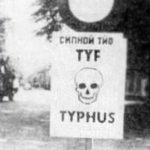 The plan came about in an unusual way. One day, a Polish soldier on leave begged Eugene and his colleague, Dr Stanislaw Matulewicz, to help him avoid returning to the warfront. I think there were many people who fought on the Nazi side of that era, who would give anything not to take part in what the Nazis were all about. Matulewicz had discovered that by injecting a healthy person with a vaccine of dead bacteria, that person would test positive for epidemic typhus without experiencing the symptoms. In an attempt to help the young solider fake a life-threatening illness, the doctors who had discovered that a dead strain of the Proteus OX19 bacteria in typhus would still lead to a positive test for the disease. Eugene realized that this could be used as a defense against the Nazis.
The plan came about in an unusual way. One day, a Polish soldier on leave begged Eugene and his colleague, Dr Stanislaw Matulewicz, to help him avoid returning to the warfront. I think there were many people who fought on the Nazi side of that era, who would give anything not to take part in what the Nazis were all about. Matulewicz had discovered that by injecting a healthy person with a vaccine of dead bacteria, that person would test positive for epidemic typhus without experiencing the symptoms. In an attempt to help the young solider fake a life-threatening illness, the doctors who had discovered that a dead strain of the Proteus OX19 bacteria in typhus would still lead to a positive test for the disease. Eugene realized that this could be used as a defense against the Nazis.
The two doctors hatched a secret plan to save about a dozen villages in the vicinity of Rozwadów and Zbydniów not only from forced labor exploitation, but also Nazi extermination. Lazowski began distributing the phony vaccine widely. Within two months, so many new (fake) cases were confirmed that Eugene successful 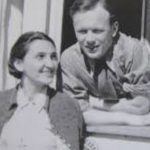 convinced his Nazi supervisors a typhus epidemic had broken out. The Nazis immediately quarantined areas with suspected typhus cases, including those with Jewish inhabitants. In 12 other villages, Eugene created safe havens for Jews through these quarantines. His work would eventually save 8,000 Jewish lives.
convinced his Nazi supervisors a typhus epidemic had broken out. The Nazis immediately quarantined areas with suspected typhus cases, including those with Jewish inhabitants. In 12 other villages, Eugene created safe havens for Jews through these quarantines. His work would eventually save 8,000 Jewish lives.
When the war ended, Eugene continued to practice medicine in Poland until he was forced to flee with his family to the United States. They settled in Chicago, where Eugene earned a medical degree from the University of Illinois. Decades later, he finally returned to Poland, where he received a hero’s welcome for saving those in desperate need of salvation through his unyielding love for humanity.
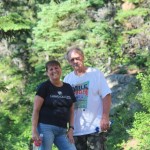
 After breaking my shoulder on October 18, 2015, in a fall on the Bridle Trail on Casper Mountain, I think a lot of people wondered if I would ever hike again, and if I did, if the Bridle Trail was going to be on the list of trails I liked best…or was even willing to hike on at all. I always knew that I would go on it again, but I got pretty out of shape in the months following the accident. For one thing, I found out that pain medications, make you gain weight, probably because they make you very hungry and very sleepy. And I’m sure there was a degree of depression about the injury, but I’m not one to let something get me down for very long. By January I was ready to get back into shape for hiking. My husband, Bob Schulenberg and I have loved hiking since 1995, when we first hiked Harney Peak in the Black Hills of South Dakota. It is a love of hiking that continues to grow. I wanted to get back into it, and I wanted to hike the Bridle Trail again.
After breaking my shoulder on October 18, 2015, in a fall on the Bridle Trail on Casper Mountain, I think a lot of people wondered if I would ever hike again, and if I did, if the Bridle Trail was going to be on the list of trails I liked best…or was even willing to hike on at all. I always knew that I would go on it again, but I got pretty out of shape in the months following the accident. For one thing, I found out that pain medications, make you gain weight, probably because they make you very hungry and very sleepy. And I’m sure there was a degree of depression about the injury, but I’m not one to let something get me down for very long. By January I was ready to get back into shape for hiking. My husband, Bob Schulenberg and I have loved hiking since 1995, when we first hiked Harney Peak in the Black Hills of South Dakota. It is a love of hiking that continues to grow. I wanted to get back into it, and I wanted to hike the Bridle Trail again.
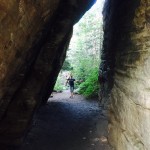
 Yesterday, I returned to the Bridle Trail to pick up where I left off in October. My granddaughter, Shai Royce has been hiking with her grandpa and me this summer, and she loves it. She never considered herself an outdoor girl, but she has since changed her mind. This past weekend, we hiked the Garden Creek Trail, and she loved it so much that she decided that she wanted to hike the Bridle Trail. Sunday was out of the question, so we decided that we would go Monday evening. Anyone who has ever hiked the Bridle Trail knows that the first half hour is the toughest. Nevertheless, while we had to stop to rest and catch our breath, we had a wonderful time. Shai thoroughly enjoyed it, and wants to go again, so we are making plans for several hikes before she moves to Washington in July.
Yesterday, I returned to the Bridle Trail to pick up where I left off in October. My granddaughter, Shai Royce has been hiking with her grandpa and me this summer, and she loves it. She never considered herself an outdoor girl, but she has since changed her mind. This past weekend, we hiked the Garden Creek Trail, and she loved it so much that she decided that she wanted to hike the Bridle Trail. Sunday was out of the question, so we decided that we would go Monday evening. Anyone who has ever hiked the Bridle Trail knows that the first half hour is the toughest. Nevertheless, while we had to stop to rest and catch our breath, we had a wonderful time. Shai thoroughly enjoyed it, and wants to go again, so we are making plans for several hikes before she moves to Washington in July.
For me, the hike was a victory in several ways. I can’t say that I didn’t get winded, but that is not unusual for me, and I hope to get my lungs in better shape for the hills in the future, but I did well with the hike, and there 
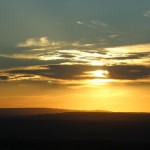
was no fear about the trail. We even went the same way we had gone when I fell, because I guess I felt like I needed to just get back on the horse that bucked me off, so that I could fully conquer the giant that could have formed in my life. The sooner you get back on that horse, the less chance fear has to take hold. I can now honestly say that since my return to the Bridle Trail…any concern that I might be afraid is totally gone, and I very much look forward to our next hike, and each subsequent hike on the Bridle Trail or any other trail. t was a lovely evening, and I still love hiking!!
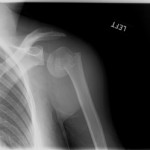 When an injury occurs, such as a broken bone, most often you are unable to participate in your normal sports activities. My case was no different. On October 18, 2015, I broke my shoulder in a fall, while hiking the Bridle Trail on Casper Mountain. It was a break that required surgery to repair, and of course, the healing of the broken bone was followed by physical therapy, which I continue to do. My case has been considered unusual, in that a break that is supposed to be among the most painful, has not been extremely painful to me. I don’t know if I just have a high tolerance for pain, if my surgeon just did an amazing job, or if my break, which twisted the ball of my shoulder joint a quarter turn, was not as bad as they thought…an unlikely scenario, I think. My guess is that I have a high tolerance for pain, because my surgeon is surprised that I’m not hurting more than I am. Physical therapy is an amazing journey in its own right, and I continue to get closer and closer to full restoration every day.
When an injury occurs, such as a broken bone, most often you are unable to participate in your normal sports activities. My case was no different. On October 18, 2015, I broke my shoulder in a fall, while hiking the Bridle Trail on Casper Mountain. It was a break that required surgery to repair, and of course, the healing of the broken bone was followed by physical therapy, which I continue to do. My case has been considered unusual, in that a break that is supposed to be among the most painful, has not been extremely painful to me. I don’t know if I just have a high tolerance for pain, if my surgeon just did an amazing job, or if my break, which twisted the ball of my shoulder joint a quarter turn, was not as bad as they thought…an unlikely scenario, I think. My guess is that I have a high tolerance for pain, because my surgeon is surprised that I’m not hurting more than I am. Physical therapy is an amazing journey in its own right, and I continue to get closer and closer to full restoration every day.
My healing process is going well, and today I received the go ahead To begin bowling again. I am excited about getting back to normal, but I must say that taking up bowling again will not be done without a degree of apprehension. Remember, it was a fall that broke my shoulder in the first place, and I slide about half of the approach. Needless to say, that is going to feel like a long distance to someone who has missed almost three months of the bowling season. Nevertheless, I will take up bowling again, because I refuse to let fear or apprehension beat me. I don’t necessarily expect to bowl great, but it will be great to take that next step back to my normal life.
Many times, an accident can mean the end of that and many other activities, but I refuse to quit, and I have no immediate plans to modify my bowling style.  I have bowled this way for 30 years, after all. Still, my stubbornness will most likely carry me through. My husband, Bob thinks I should try a couple of shots before I decide, and I think that’s a good idea, because it has been three months. So, I have thrown that first ball, and I must admit that I was literally shaking. I felt like a baby trying to take those first steps away from a table, although I can’t say that I recall if I was shaking with those first steps. As my game has proceeded, I find myself with two spares and three strikes in six frames, and the shaking has stopped. I guess you might say that I’m back. I’m sure my left arm has a ways to go yet, but I am on my way to full restoration, and with a 178 my first game, I can honestly say that it’s good to be back!!
I have bowled this way for 30 years, after all. Still, my stubbornness will most likely carry me through. My husband, Bob thinks I should try a couple of shots before I decide, and I think that’s a good idea, because it has been three months. So, I have thrown that first ball, and I must admit that I was literally shaking. I felt like a baby trying to take those first steps away from a table, although I can’t say that I recall if I was shaking with those first steps. As my game has proceeded, I find myself with two spares and three strikes in six frames, and the shaking has stopped. I guess you might say that I’m back. I’m sure my left arm has a ways to go yet, but I am on my way to full restoration, and with a 178 my first game, I can honestly say that it’s good to be back!!
 I think most people have heard of the Great Chicago Fire of 1871, but few have heard of the Great Peshtigo Fire of 1871, that started the same day, October 8, 1871. I’m sure that Chicago, being a much bigger city, made it a fire that stuck in the minds of the people, but in reality, the Great Peshtigo Fire was far more deadly. The Chicago fire burned an area about four miles long and almost a mile wide through the Windy City, including its business district. The fire destroyed thousands of buildings, killed an estimated 300 people and caused an estimated $200 million in damages. That is a horrible fire, and a horrible loss of life and property, but it truly pales in comparison to the Great Peshtigo Fire. The Great Peshtigo Fire took place in the area around Peshtigo, Wisconsin and the death toll was estimated at around 1,500 people, and possibly as many as 2,500. I suppose that it seems odd for the estimate to be a difference of as many as a thousand people, but when the fire was finally out, twelve communities were destroyed. An accurate death toll has never been determined because local records were destroyed in the fire. Between 1,500 and 2,500 people are thought to have lost their lives. The 1873 Report to the Wisconsin Legislature listed 1,182 names of deceased or missing residents. In 1870, the Town of Peshtigo had 1,749 residents. More than 350 bodies were buried in a mass grave, primarily because so many had died that no one remained alive who could identify many of them. In the end, over, 1,875 square miles, or 1.2 million acres of forest had been consumed, an area approximately twice the size of Rhode Island. Some sources list 1.5 million acres burned.
I think most people have heard of the Great Chicago Fire of 1871, but few have heard of the Great Peshtigo Fire of 1871, that started the same day, October 8, 1871. I’m sure that Chicago, being a much bigger city, made it a fire that stuck in the minds of the people, but in reality, the Great Peshtigo Fire was far more deadly. The Chicago fire burned an area about four miles long and almost a mile wide through the Windy City, including its business district. The fire destroyed thousands of buildings, killed an estimated 300 people and caused an estimated $200 million in damages. That is a horrible fire, and a horrible loss of life and property, but it truly pales in comparison to the Great Peshtigo Fire. The Great Peshtigo Fire took place in the area around Peshtigo, Wisconsin and the death toll was estimated at around 1,500 people, and possibly as many as 2,500. I suppose that it seems odd for the estimate to be a difference of as many as a thousand people, but when the fire was finally out, twelve communities were destroyed. An accurate death toll has never been determined because local records were destroyed in the fire. Between 1,500 and 2,500 people are thought to have lost their lives. The 1873 Report to the Wisconsin Legislature listed 1,182 names of deceased or missing residents. In 1870, the Town of Peshtigo had 1,749 residents. More than 350 bodies were buried in a mass grave, primarily because so many had died that no one remained alive who could identify many of them. In the end, over, 1,875 square miles, or 1.2 million acres of forest had been consumed, an area approximately twice the size of Rhode Island. Some sources list 1.5 million acres burned.
The Peshtigo Fire was a forest fire that took place on October 8, 1871 in and around Peshtigo, Wisconsin. It was a firestorm that caused the most deaths by fire in United States history. A firestorm is a destructive fire which attains such intensity that it creates and sustains its own wind system. It is most commonly a natural phenomenon, created during some of the largest bushfires and wildfires. The biggest problem in 1871 was the 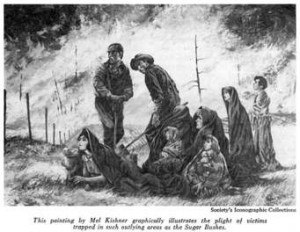 prolonged and widespread drought and high temperatures, capped off by a cyclonic storm in early October. The blaze began at an unknown spot in the dense Wisconsin forest. It first spread to the small village of Sugar Bush, where every resident was killed. There was simply no way of escape for them. High winds then sent the 200 foot flames racing northeast toward the neighboring community of Peshtigo. Temperatures reached 2,000 degrees Fahrenheit, causing trees to explode in the flames. The setting of small fires was a common way to clear forest land for farming and railroad construction. On the day of the Peshtigo Fire, a cold front moved in from the west, bringing strong winds that fanned the fires out of control and escalated them to massive proportions. A firestorm ensued. In the words of Novelist Denise Gess and historian William Lutz, “A firestorm is called nature’s nuclear explosion. Here’s a wall of flame, a mile high, five miles (8 km) wide, traveling 90 to 100 miles per hour (160 km/h), hotter than a crematorium, turning sand into glass.”
prolonged and widespread drought and high temperatures, capped off by a cyclonic storm in early October. The blaze began at an unknown spot in the dense Wisconsin forest. It first spread to the small village of Sugar Bush, where every resident was killed. There was simply no way of escape for them. High winds then sent the 200 foot flames racing northeast toward the neighboring community of Peshtigo. Temperatures reached 2,000 degrees Fahrenheit, causing trees to explode in the flames. The setting of small fires was a common way to clear forest land for farming and railroad construction. On the day of the Peshtigo Fire, a cold front moved in from the west, bringing strong winds that fanned the fires out of control and escalated them to massive proportions. A firestorm ensued. In the words of Novelist Denise Gess and historian William Lutz, “A firestorm is called nature’s nuclear explosion. Here’s a wall of flame, a mile high, five miles (8 km) wide, traveling 90 to 100 miles per hour (160 km/h), hotter than a crematorium, turning sand into glass.”
It would be impossible for most of us to imagine the way the people in that area felt that night. For so many of them, the way of escape, and with it, the hope of life disappeared in a matter of minutes. They didn’t know that the fire was coming until it had cut off their way of escape. Whole families were wiped out, and for the parents…well, I can’t imagine the sick feeling they had, knowing that they could not save their children. The fear the children must have felt, and the fear their parents shared with them…but, nothing could be done. They could only sit and wait for the end, trying not to speak the thoughts they were thinking…trying to give the children comfort and peace, even though their short lives were all they were going to get. So much has been learned over the years about drought and red flag (severe fire danger) days, but back then, they did not have the tools we have now, that can warn us of red flag situations, and even now, there are wildfires that destroy 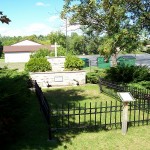 miles and miles of land, and with it towns and homes. If that can happen these days, I can only imagine how easily it could have happened then. Many people have called the Great Peshtigo Fire, the forgotten fire, but in recent years America’s “forgotten fire” has proven to be anything but. The tragedy is a subject of inquiry and debate among meteorologists, astronomers and conservationists. It has been dramatized by novelists and playwrights. It continues to fascinate history buffs and frustrate genealogists, which is where I come in. While the list of the dead from the Great Peshtigo Fire, does not include names I know to belong to my family, the idea of a thousand people unaccounted for in any way, makes me wonder if some of the Wisconsin connections I have been unable to make could be among the lost ones of the Great Peshtigo Fire.
miles and miles of land, and with it towns and homes. If that can happen these days, I can only imagine how easily it could have happened then. Many people have called the Great Peshtigo Fire, the forgotten fire, but in recent years America’s “forgotten fire” has proven to be anything but. The tragedy is a subject of inquiry and debate among meteorologists, astronomers and conservationists. It has been dramatized by novelists and playwrights. It continues to fascinate history buffs and frustrate genealogists, which is where I come in. While the list of the dead from the Great Peshtigo Fire, does not include names I know to belong to my family, the idea of a thousand people unaccounted for in any way, makes me wonder if some of the Wisconsin connections I have been unable to make could be among the lost ones of the Great Peshtigo Fire.
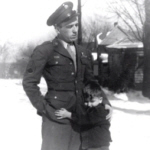 Veteran’s Day is a day about sacrifice and honor, duty and dedication, war and peace, but the day cannot pass for me without thoughts of my dad, and how much I miss him. I know I am not alone in these thoughts, because my mom and sisters also miss him, as well as the rest of our family. Still, no one who has lost a loved one who was a veteran, whether to war or after, can pass this day without thoughts of their loved ones. I think of my Grandpa Byer, my uncles Ted Byer, Cliff Byer, Larry Byer, Jim Wolfe, and my cousin, Larry Wolfe…all gone now, but not lost in war, thankfully. I think of those who, in World War II, couldn’t serve in combat, and so they served at home in the shipyards as builders and Rosie the Riveters, like my Aunt Ruth, Aunt Laura, and Uncle Bill, who couldn’t go because of a hernia and flat feet. And I think of the loved ones…too many to list here…who have fought and returned, and those who continue to fight to secure our nation, and stop terrorist acts all over the globe.
Veteran’s Day is a day about sacrifice and honor, duty and dedication, war and peace, but the day cannot pass for me without thoughts of my dad, and how much I miss him. I know I am not alone in these thoughts, because my mom and sisters also miss him, as well as the rest of our family. Still, no one who has lost a loved one who was a veteran, whether to war or after, can pass this day without thoughts of their loved ones. I think of my Grandpa Byer, my uncles Ted Byer, Cliff Byer, Larry Byer, Jim Wolfe, and my cousin, Larry Wolfe…all gone now, but not lost in war, thankfully. I think of those who, in World War II, couldn’t serve in combat, and so they served at home in the shipyards as builders and Rosie the Riveters, like my Aunt Ruth, Aunt Laura, and Uncle Bill, who couldn’t go because of a hernia and flat feet. And I think of the loved ones…too many to list here…who have fought and returned, and those who continue to fight to secure our nation, and stop terrorist acts all over the globe.
Theirs is a sacrifice beyond measure, a debt we cannot repay. Every day of their service they work, without knowing if they will return to their loved ones, or if this will be the day that a bullet, rocket, or bomb will have their name on it. They go to work knowing fear, as if it was their closest friend, and yet knowing that it is no friend at all. They have to bite back that fear and do their job…because it is needed…they are needed…because without them we are a nation unprotected. Most of us go to bed at night, secure in what the next day will bring, because we live in a nation where freedom belongs to everyone. Nevertheless, we must remember that it is not free. Over the years, our nation has lost so many young people to war. They were really our hope for the future. They were people full of promise. People with plans and dreams…all gone now.
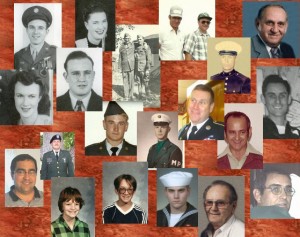 War is a horrible thing, and none of us really want to engage in it. Still, evil exists out there, and it does its very best to reek havoc upon the world. If we do nothing, many innocent people will die. And so God created soldiers. He knew that they would have to be people of honor and dedication, with a strong sense of duty and love for their fellow man. They would have to be people of courage and bravery…able to bite back the fear that dwells all around them. God knew the kind of people they would have to be…Heroes. And that is what every veteran is, was, and always will be…a hero. Today is Veteran’s Day. It is a day to honor those who have given so much to keep us free. Thank you all for your great service. God bless you…everyone of you.
War is a horrible thing, and none of us really want to engage in it. Still, evil exists out there, and it does its very best to reek havoc upon the world. If we do nothing, many innocent people will die. And so God created soldiers. He knew that they would have to be people of honor and dedication, with a strong sense of duty and love for their fellow man. They would have to be people of courage and bravery…able to bite back the fear that dwells all around them. God knew the kind of people they would have to be…Heroes. And that is what every veteran is, was, and always will be…a hero. Today is Veteran’s Day. It is a day to honor those who have given so much to keep us free. Thank you all for your great service. God bless you…everyone of you.

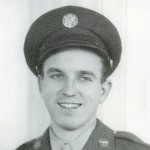 Every soldier who ever signed up had to go through a few moments of fear or worry about where the steps they were taking were going to lead them. Whether they signed up voluntarily, or were drafted, there was always the possibility, or in many cases, the probability that they would soon find themselves fighting and killing men, or boys really, who were the same age or even younger than they were. In early wars, the fighting was hand to hand, and even when guns were invented, they often saw the result of their direct hit on the enemy. They witnessed the fear, so vividly evident on the face of that person who was the enemy, and yet was really no different than they were. Both men were scared. It truly was kill or be killed, because it was war, and the only objective was to win.
Every soldier who ever signed up had to go through a few moments of fear or worry about where the steps they were taking were going to lead them. Whether they signed up voluntarily, or were drafted, there was always the possibility, or in many cases, the probability that they would soon find themselves fighting and killing men, or boys really, who were the same age or even younger than they were. In early wars, the fighting was hand to hand, and even when guns were invented, they often saw the result of their direct hit on the enemy. They witnessed the fear, so vividly evident on the face of that person who was the enemy, and yet was really no different than they were. Both men were scared. It truly was kill or be killed, because it was war, and the only objective was to win.
Many of my ancestors have been in wars, including most recently, my dad, brothers-in-law, several uncles, nephews, and grandfathers. I have read some of my dad’s letters home from the war, and while he tried to sound positive and unafraid, you could still see, if you read between the lines, that war and a degree of fear simply went together. Still, I can imagine that as each of those men and women are standing in line to get the many vaccinations they had to have, that for a least a moment, they wondered just what they had gotten themselves into. Of course, there was really no way out. It didn’t matter if they enlisted voluntarily or were drafted, they belonged to Uncle Sam either way. They were going into battle, and that’s all there is too it.
Of course, the soldier is trained to be brave and not to show fear, and maybe they truly have to do that. I know that if you show fear to a dog, they pick up on that…so does the enemy too…maybe. All I know is that deep in their hearts, they must feel like they would like to run in the face of enemy fire. Of course, they can’t. They must fight. This is war…this is kill or be killed…this is their duty, and even if it means that they lose their life, they must do their duty. People are depending on them. Not just their platoon members, but their nation, and the people of the nation they are trying to protect from whatever evil people are trying to take them over.
When I think of our soldiers, I have to think of how very brave and courageous they are, 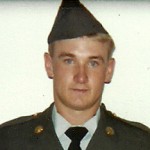
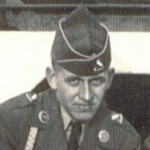 because as the saying goes, “I learned that courage was not the absence of fear, but the triumph over it. The brave man is not he who does not feel afraid, but he who conquers that fear.” I feel very proud of all those men and women in our family, as well as our friends, who have answered the call to duty, set aside their fears, and gone out to do their duty in the fight against evil. They are a huge part of what makes this country great.
because as the saying goes, “I learned that courage was not the absence of fear, but the triumph over it. The brave man is not he who does not feel afraid, but he who conquers that fear.” I feel very proud of all those men and women in our family, as well as our friends, who have answered the call to duty, set aside their fears, and gone out to do their duty in the fight against evil. They are a huge part of what makes this country great.
 As I continue to read through my dad’s letters to his family during World War II, I have been reading between the lines, and behind the scenes that he was able to share. During a war, the soldiers involved are unable to speak about the operations they are taking part in. Still as young men and women, far away from home, they want and need to write and receive letters. They need the closeness of family, and yet they don’t want to worry their family, and they are bound by military rules, not to talk about the missions. So much so, that letters must be read to make sure no information accidentally gets out.
As I continue to read through my dad’s letters to his family during World War II, I have been reading between the lines, and behind the scenes that he was able to share. During a war, the soldiers involved are unable to speak about the operations they are taking part in. Still as young men and women, far away from home, they want and need to write and receive letters. They need the closeness of family, and yet they don’t want to worry their family, and they are bound by military rules, not to talk about the missions. So much so, that letters must be read to make sure no information accidentally gets out.
Knowing my dad in his later years, and getting to know him through his letters home, I know that he was not a man who wanted others, especially his family to worry about him. So, he never told of pain or fears. Which leads me to believe that my dad wouldn’t have told his family, and especially his mom, what he was feeling during the bombing missions he went on every day. Not even if he could have. That was just the man my dad was…as a young soldier, and as a adult husband and father.
Still, in reading his letters, the need for comfort and reassurance that existed in him every day, whispered quietly from between the lines and behind the words my dad wrote in his letters. He asked for good news concerning men he knew that were in the service too. Hoping that if they were ok, he would be too. Of course, I can’t be sure that those were my dad’s feelings or his thoughts, but I know that is how I felt when I looked at the pictures he took of flak from the German Fliegerabwehrkanone. This was an 88mm gun capable of rapid fire. The resulting shell fragments would rip through the planes and it is said that it took over 3,300 rounds to take down a plane. And those guns did take down planes. The B-17 bombers had to fly through these traps on the way to and from their targets. How could these boys go through that every day and not have fear that they would not come home. I know it took great faith in God to move beyond that fear…to keep going…to survive the  day to day nerve racking missions.
day to day nerve racking missions.
I have great respect for all of our soldiers, because they push their fears back every day, and hide their true feelings from their loved ones so they don’t worry. And yet, when I look at the pictures Dad took of the flak all around their plane, and read the letters telling his family that he is “ok and feeling fine”, which is really a way of saying he is still ok, and not telling them much of anything I think I understand what true bravery is. That was typically my dad, never allowing his feelings to worry his family. I feel that I know my dad better from his letters and it makes me appreciate what a wonderful man he was even more. I love you Daddy!!

